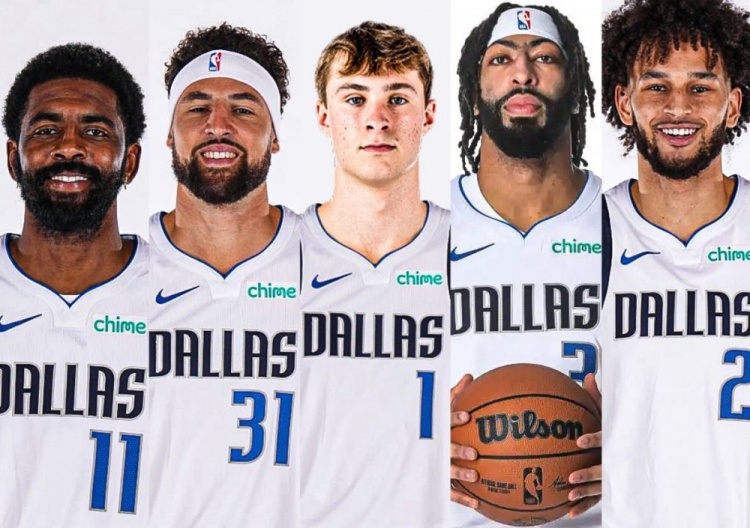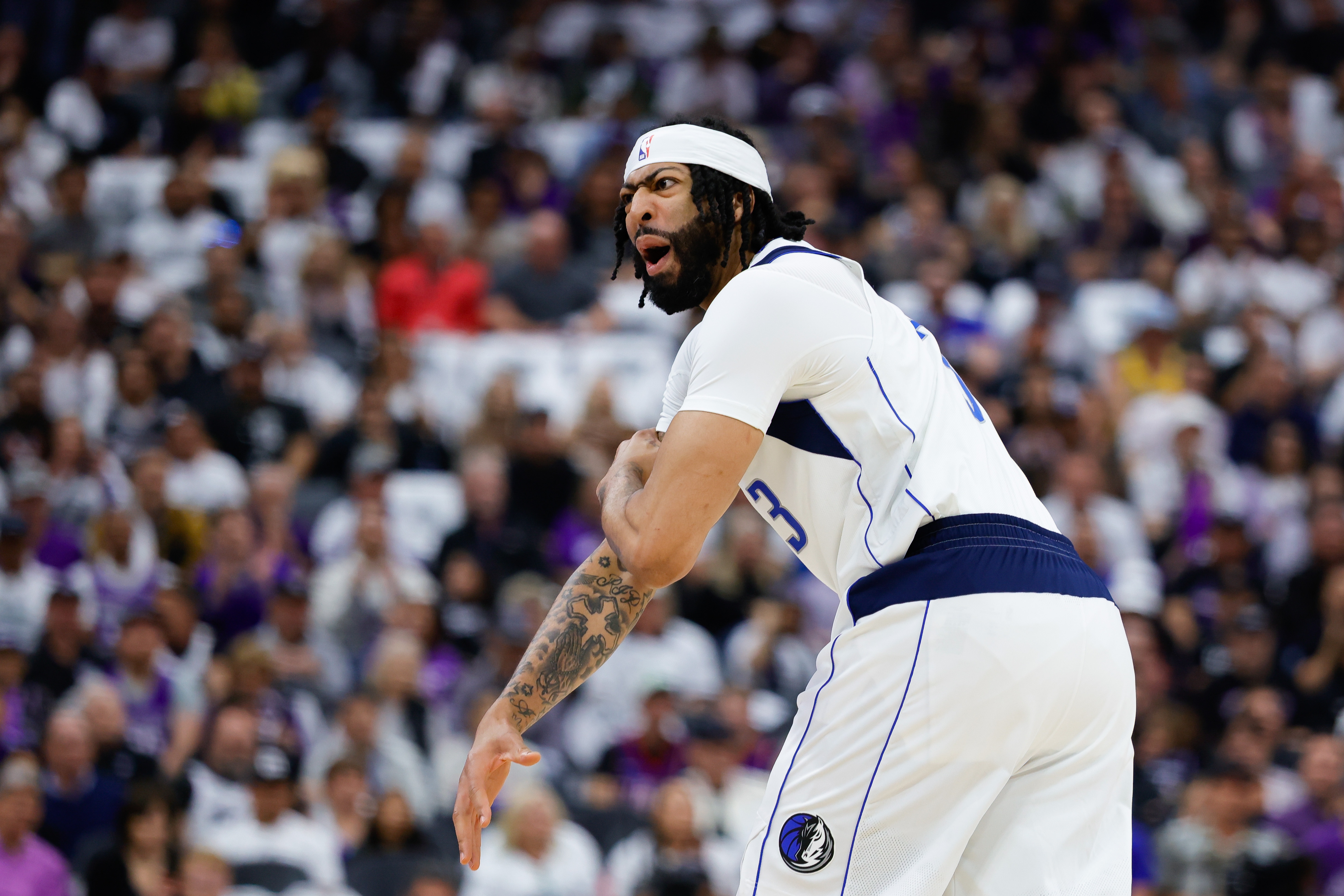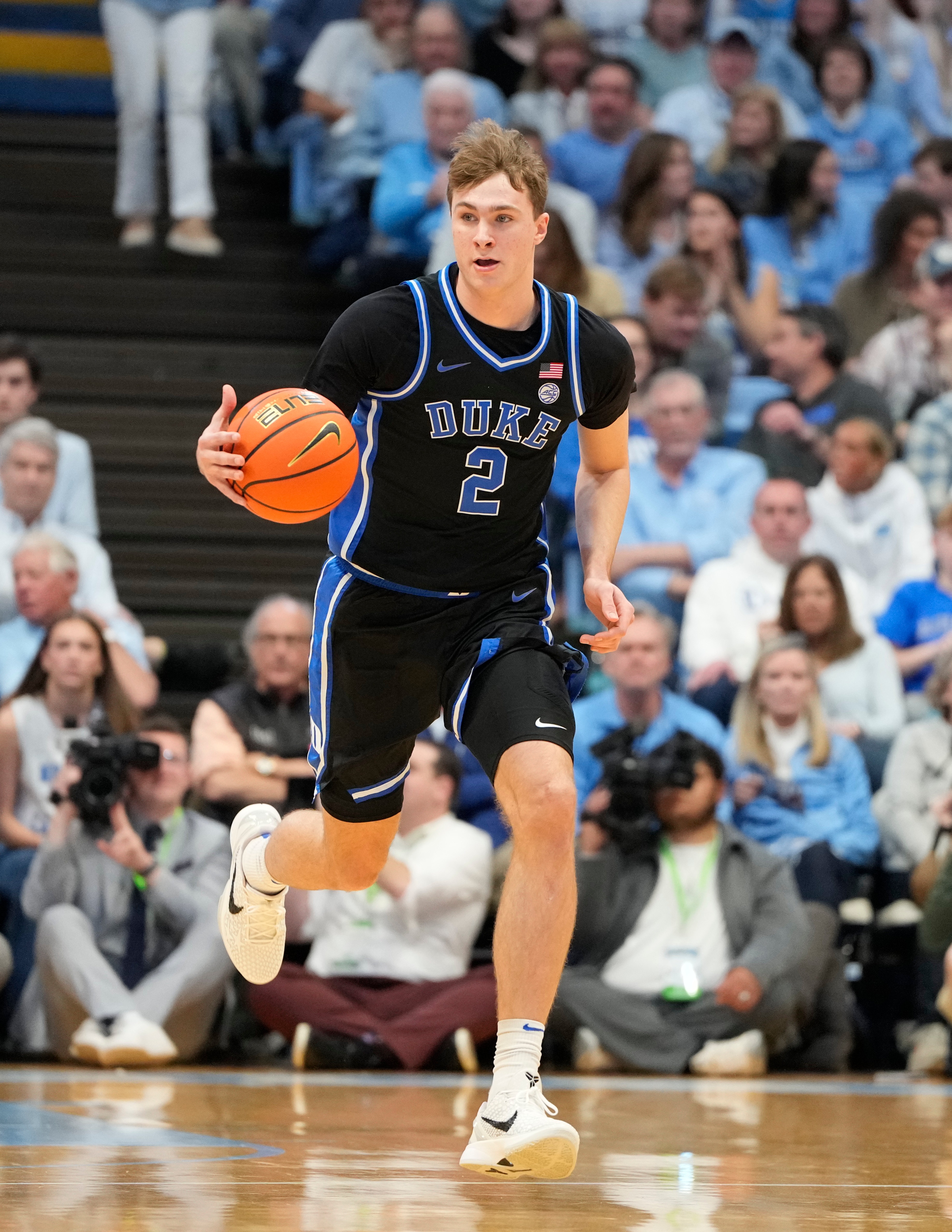Analysis of the Mavericks best starting lineup in the new season: Davis was forced to play as center? Flag s scoreback?
(The original text was published on June 26, and the author is Jasmyn Wimbish of CBS Sports. The content of the article does not represent the translator's views) The Mavericks officially selected Cooper Flag with the No. 1 pick on the first day of this year's NBA draft, opening a new era. This choice is no suspense, but the real challenge for the Mavericks has just begun. The Mavericks seem to plan to adopt a dual-timeline development strategy in the Flag era, not because it is the best option, but because they have Irving and Davis in their year of fighting, and they have no choice. As long as Davis is not traded unexpectedly, the Mavericks' future plan is to integrate veterans and rookies. We hope that the Mavericks can accurately control this balance and create a competitive lineup. But how will Flag integrate into the Mavericks' system? There is no doubt that the new draft No. 1 pick will be locked in the starting position from the beginning of joining. However, considering that the current lineup was originally built to adapt to Doncic (before the league-shocking trade in February this year), how should the Mavericks adjust to adapt to this new player who is 2.03 meters tall? Although there are no obvious adaptability issues, as the Mavericks enter a new era, there are still many issues that need to be considered. Based on these factors, let us explore several key issues that the Mavericks need to be solved after formally selecting Flag. What will the starting lineup look like after joining Frager joins? The Mavericks' lineup suddenly became imbalanced, with oversold strikers and insufficient defenders. This issue will certainly be resolved before the start of the new season, as Irving will be out of the box for recovery from an ACL torn ACL at least until January next year, and the Mavericks need to find a replacement point guard before he returns. However, unless some forward players are sent away through trades, the Mavericks will have to make difficult choices to determine the starting lineup. For the Mavericks, this is actually a sweet trouble. Having an oversupply of wingers is a difficult problem that many teams dream of, but how to match the best roster will become the top priority for head coach Kidd. The starting lineup we may see in the early stage of the new season is as follows: Point Guard: To be determined/Irving (after injury recovery) Point Guard: Clay Little Front: Flagg Big Front: Davis Center: Leifly This lineup has many highlights worth looking forward to, among which the chemistry between Flagg and Leifly is particularly critical. During Duke's time, Flag cooperated with his teammate Carman Maluach at 2.18 meters. He is good at cooperating with big men in pick-and-roll, can pass the ball accurately when defenders double-team themselves, and can also send free assists to complete dunks. These are precisely the technical areas that Lefly (and Gafford, who just signed a three-year, $54 million contract extension) are best at. Flag's growth as an organizer and opportunity creator will also benefit Clay. Even though he has passed his peak, Clay, the all-time shooter, still maintains his top shooting level. In fact, Flag had a successful cooperation with sharpshooter Con Knippel at Duke University, who played a role similar to Clay: using the help of no-ball cover to find open spaces on the outside, and opening up space in the conversion offense to wait for Flag's pass to make a fixed three-pointer, so Flag's cooperation with Clay should be able to connect naturally. There is an obvious hidden danger to this lineup (or any lineup with Lefley or Gafford as centers) - the problem of space congestion. Although Flag has greatly improved his jump shot at Duke University, his best attitude is to hit the penalty area and attack the basket. Neither Lefly nor Gafford have the ability to shoot outside and cannot open up a breakthrough space for Flagage. Davis, whose main activity is at a low post and although he can make three-pointers but is not a stable space point, will put the Mavericks' offensive space into a catastrophic situation. In modern NBA games, it is not a wise move to send multiple players who cannot open up space at the same time. So the Mavericks may soon find out: rather than letting Lefly or Gafford start, it is better to push Flag into the power forward position and let PJ Washington be the small forward. This adjustment may mean that Davis needs to be switched to center, which brings the next question. Davis is willing to return to the center position? Davis has publicly stated on many occasions that he prefers to be a power forward. He doesn't like the physical exhaustion of hand-to-hand defense and rebounding required at the center position, and when the Mavericks first traded him, having two inside partners, Lefley and Gafford, was the perfect solution. However, after choosing Flag, the situation suddenly changed. Although Davis did not like to play center, under the existing lineup structure, he was the No. 5 position and the power forward, which was played as the most reasonable configuration. It seems a bit pedantic to discuss specific positions in modern basketball where the concept of position is increasingly blurred. In fact, Flag is perfectly competent in two forward positions, just as Davis can switch freely between power forward and center. But the positioning on the defensive end is crucial: let Flag defend the opponent's fourth position (with Davis provided defensive support) be much more efficient than the outside small forward who allows him to face faster. Flag's basket protection and weak side coordination ability, combined with Davis' low-post defense, will form a defensive system that will cause trouble to the opponent. This lineup with Davis as center may be as follows: Point Guard: Try/Irving (after injury) Point Guard: Clay Small Front: PJ-Washington Big Front: Flagg Center: Davis This configuration has much flexibility on both ends of the offense and defense than using Lefley or Gafford to play center. From a spatial perspective, Davis's play in the fifth position allows PJ Washington to continue to start. The latter's stable three-point threat will force the defender to expand outside, creating offensive space for Davis and Flag in the penalty area, which in turn can increase PJ-Washington and Clay's shooting opportunities on the outside. This lineup also has advantages in size and basket protection. The 3-5 position is composed of Washington at 1.98 meters, Flag of 2.03 meters and Davis at 2.08 meters. It not only has amazing height advantages, but also can form a multi-position defense switching system on the defensive end: Washington can switch defense to No.5 position, while Flag can cover at least three positions of defensive tasks. However, the problem is that this lineup requires the cooperation of Davis, who has resisted playing in the center position in the past. Considering that the Mavericks have just completed a contract renewal with Gafford (at least at this stage) to ensure the depth of the inside, Davis’s time at the fifth position may be very limited. If Davis can be more open to the center role, or the Mavericks can clear up some of the crowded rotations in the frontcourt, it will be the best choice for the Mavericks to implement a dual-timeline strategy. Of course, there is another solution: trade players such as Washington for point guard resources, and perhaps sign cheaper substitute small forwards to satisfy Davis' willingness to play power forwards. But the Mavericks ultimately need to make the decision that is most conducive to Flagg's development, after all, he will serve as the team's face for at least the next decade, even if it means that it may need to irritate Davis slightly. Let Flag be in the backcourt? Although Flag is a versatile, he is not a defender after all, and I know this very well. But is it really ridiculous for the Mavericks to try this extreme roster next season? Suppose they line up this lineup: Point Guard: Try/Irving (after injury) Point Guard: Flag Little Front: PJ-Washington Big Front: Davis Center: Levley This lineup combination is like the crazy idea of Coach Kidd and General Manager Harrison: a never-ending defensive meat grinder. It might be acceptable to have Clay play a substitute instead of Washington, although this will reduce the team's on-court space. Clay is no longer as brave as he used to be, and Washington's defensive value is crucial to the Mavericks. If he stays in the team, he should lock in the starting position. Such an arrangement can also satisfy Davis' willingness to play power forward. But for Flag, this positioning would be a bit awkward. Although he has undertaken a lot of offensive initiation tasks at Duke this season and has made great progress in three-point shooting, the point guard is not his natural position after all. But think about the misalignment advantage created by this lineup: Flag can crush smaller defenders and kill directly at the basket, and can also pass the ball to Davis or Lefley who gets misalignment opportunities. When the opponent faces this lineup of big men, defensive matches will become a nightmare, and the Mavericks can always find weaknesses that can be targeted. The only weak link on the defensive end may be Irving, who has returned from injury, and his defensive attitude has improved after joining the Mavericks. Although it is not considered a big gate, even if the speed guard can break through Irving, he will face the "no-fly zone" built by Flag (2.03), Washington (1.98), Davis (2.08) and Lefly (2.16). This defensive system consisting of four forward giants with the ability to switch defense is enough to make up for any short-term loss of outside defense. This seemingly crazy idea, but Kidd actually suggested it as early as May this year after he won the No. 1 pick. When talking about Flag, Coach Kidd said: "I saw this young man who just turned 18 can do multiple positions. He only turned 19 in December, which is amazing. In modern basketball, he can play No. 2 to No. 4, and if he insists on labeling him, he can even play No. 5 occasionally. Although he may still grow taller at the age of 18, he can play No. 2, and his shooting and ball-holding ability are enough. As I said, we can send a huge starting lineup." The key is that Flag gives the Mavericks infinite possibilities. Although it takes time to find the perfect lineup combination, compared to the situation where Doncic became a laughing stock in the league due to trading Doncic a few months ago, the Mavericks with Flag have taken the initiative. Selecting Flag is just the easiest first step. Now the Mavericks must build the best squad combination around him to maximize the potential of the genius, even if it means making sacrifices for some players. Original text: Jasmyn Wimbish Compiled by: Li Taibai


- Recent Posts
-
- Hamm: Antetokounmpo s usage ra
- Reject 89.2 million for 4 year
- Lowry leads the way with 729 o
- Team Note: Rozier s buyout has
- Good home! Shams: Lillard rece
- If you can t play the ball, yo
- Kidd: Russell is experienced a
- ESPN talks about winners and l
- Talk about the market operatio
- US media predicts that the War
- Hot Posts
-
- Good fight! Tanhua Edgecom sco
- Iceman: I hope Wenban can grow
- Booker s total salary in his c
- Matt Barnes: Rockets are optim
- Doncic angrily blames himself:
- 🤣US media joked: Lillard + Yan
- 😳 US media sighed: Heat Zhan i
- Which is the best game you hav
- Talked last year! Media person
- Agent: Jamway has been running
- Cuckling left and right! Harde
- Hiro says he won t lose fun be
- 🤑The remaining 2 years are 110
- Lake Records: There have been
- Who do you want to team with m
- Have you ever worked for James
- Haohaohao😍Talk website mock dr
- 😢Two championship guards! Brot
- The Clippers may retire their
- Almost misread! US News: The S
- search
-
- Links
-
